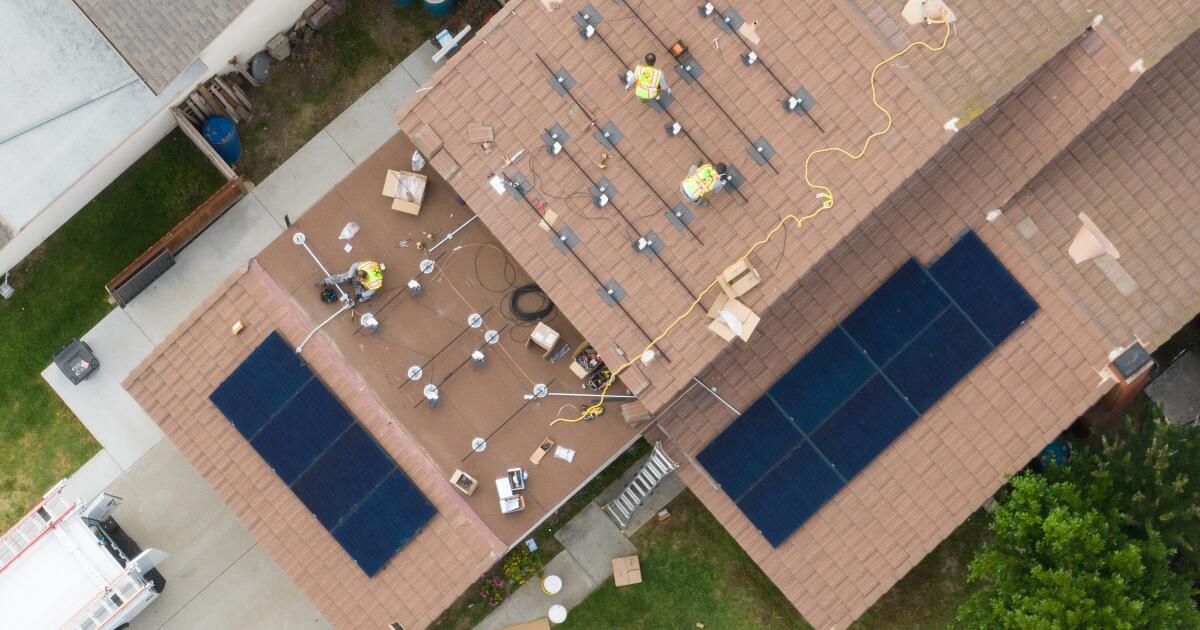- cross-posted to:
- climate@slrpnk.net
- cross-posted to:
- climate@slrpnk.net
But critics insist the costs of those solar panels are beginning to outweigh the benefits.
Incentive payments to homes with solar, they say, have led to higher electricity rates for everyone else — including families that can’t afford rooftop panels. If so, that’s not only unfair, it’s damaging to the state’s climate progress. Higher electricity rates make it less likely that people will drive electric cars and install electric heat pumps in their homes — crucial climate solutions.
The solar industry disputes the argument that solar incentive payments are driving up rates, as do many environmental activists. But Newsom’s appointees to the Public Utilities Commission are convinced, as they made clear Thursday.
“We need to reach our [climate] goals as fast as we can,” said Alice Reynolds, the commission’s president. “But we also need to be extremely thoughtful about how we reach our climate change goals in the most cost-effective manner.”
When I am having a stroke, I don’t stop and calculate of the most cost effective treatment options. I go to the emergency room. We could have done this calculation in 1970 and acted, but that ship has sailed.


Every dollar the state spends on subsidizing private individuals’ renewable energy projects is a dollar the state can’t spend on public, at-scale renewal energy projects.
I don’t understand. What’s the difference? One one hand, energy production is distributed and on the other it’s centralized.
What I mean is, if eveyone had solar then we would have a “public, at-scale renewable energy project”
Decentralized power generation can be good for redundancy/resilency/off-the-grid purposes, but if you want the highest efficiency, you need large scale, centrally engineered not-for-profit projects.
If we just called them freedom panels adoption would be so much faster. Then if everyone had panels it would be decentralized.
USA! USA! USA!
According to the op-ed
Which is kind of short on details. Googling, I see:
As the author says, that’s a big gap.
what’s the value of single point of failure?
16c/kWh?
In theory you’re not wrong. The problems with this in practice are several, which I won’t go into, except to say that it’s a very American/individualistic/neoliberal solution to what is a collective problem.
I’ll add that I’m not universally against installing small projects. It has its uses. Given federal dollars I think it’s fine to have such projects in the mix, just not as the bulk of the infrastructure.
I think they should move to subsidising home batteries instead, just to smooth out the peaks and troughs that come with renewables. If you do that, and add some smarts to electric car chargers you’d be able to remove the need for fossil powered peaker plants. Solar is generating more than can be used on some days, and we need to focus on time shifting load and generation when possible.
Here in the uk we stopped subsidising private green energy a while ago, and it’s still worthwhile to install solar - we pay our energy supplier (one of a few privatised options) for the connection and infrastructure, and any power we use, and they pay us for the power we put back into the grid. Essentially, a portion of the money we earn from our power is kept by the utility company to cover infrastructure maintenance, and we still make money. I very much doubt that the base power generation or infrastructure costs in the us are so much higher as to stop it making money for homeowners without subsidies, unless (as I’d imagine) the local power generation is a monopoly, and they’re just trying to protect their profits. Solar became cheap enough to be genuinely profitable without subsidies here a few years back.